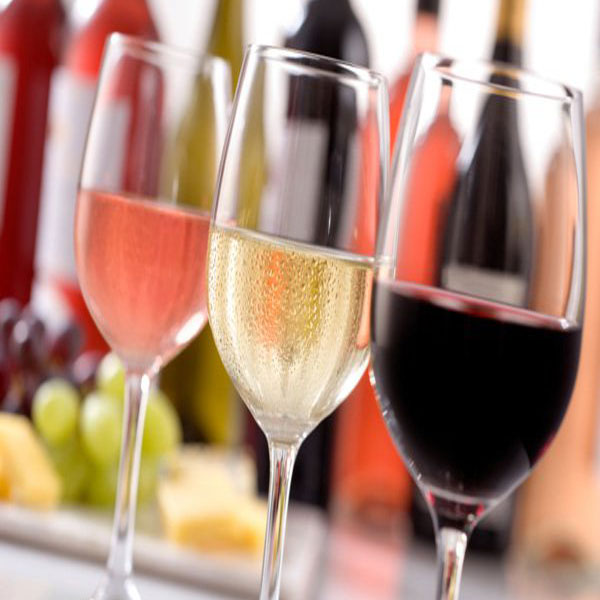An amateur's guide to the world of wine
By Papri Das
Often when we go to a formal party or a social dinner at a five star restaurant and the waiter comes up to ask us what kind of wine we would like to have, we find ourselves at a loss for words ? sparkling or rose? Chablis or Bordeaux Reds? What difference does it make when you can?t tell one from the other? You probably can afford the most expensive bottle on the menu, but don?t know what makes it so pricey. Embarrassing as it may be, such is the case with most of us who haven?t grown up in the wine culture, and are suddenly thrown into a social setting where we are expected to be experts on the subject.
For ages, wine has been a symbol of prosperity, celebration, love, eclectic taste, affluence and status in the society. Since a good bottle of wine continues to be an investment of sorts, the knowledge of wine remains limited to those who have inherited it from their earlier generation as a practice and to the extremely passionate wine aficionados. Like Vishal Kadakia, the founder and CEO of Wine Park, which is a boutique wine importing and distributing company in India supplying wines from 11 countries, 26 wine regions and 30 top quality producers.

Exec Lifestyle caught up with this renowned wine aficionado to get answers to some frequently asked questions on wines for our readers.
Is knowledge of wines important in socializing?
Absolutely. Today entertainment has become a very important part of business. Knowledge on wine, playing golf is integral for executives to know and learn. If clients enjoy your company, business becomes a lot easier. Knowing your wines over dinner and having a conversation is an art, which many people value and can help you bond.
Where does one start?
The best way to introduce amateurs to wine culture is to try wines of different styles. Like whites wines, red wines, rose wines and sparkling wines. Once the person enjoys a particular style then he/she can further start to try different wines in that particular style. For example: If a person enjoys white wines then he/she can try different white grape varietals such as Sauvignon Blanc, Chardonnay, Riesling, Viognier etc. Experimenting is the key to unlock your preferences.
Is there a right way to have a glass of wine?
Yes there is, and it is simpler than we make it to be. Drink wine in a wine glass. Make sure that you hold the glass by the stem and not the bowl. Fill the wine glass upto 1/3 only so that when you swirl the glass there is no spillage. Swirl the glass regularly to release the aromas. Keep sipping and enjoying. If it?s a white wine, you enjoy have it chilled (10 C). If you like red wine, have it at 16 C (slightly chilled). Having a red wine at room temperature will kill the taste of the wine and it will taste flat.

What are the most popular wines amongst wine enthusiasts?
Wine aficionados like to experiment a lot. They generally like wines of particular style, which are more region specific. The more popular ones are: Chablis (White wine from Burgundy France), Barolo & Barberesco (Red wines from Piedmont, Italy), Super Tuscans (Red wines from Tuscany, Italy), Bordeaux Reds, Rhone Reds (Wines from Chateauneuf du Pape, Cote Rotie), Napa Reds (Wine from Napa Valley, California, USA) and Champagne (Sparkling wines from Champage, France).
Is there something like ?affordable? wine?
In India wine drinking is expensive due to taxes. However there are several Indian wines available, which are affordable to drink. A normal salary person can start with them and if he develops a linking for it, he can explore further. The possibilities are endless.

Vishal not only shared his suggestions for a new wine enthusiast, but also corrected some commonly mistaken myths when it comes to buying a bottle of wine. The following are the most common myths in buying a wine:
1. ?Older the wine, the better it is? : No. Most of the wines that you buy should not be more than two ? three years olds. The younger vintage is more fresh and fruity, which an amateur wine drinker always enjoys.
2. If it French, then it is the best -- No. New wine drinkers enjoy more fruit forward wines, which are wines from the new world (Argentina, South Africa, Australia, New Zealand). French wines (considered old world) are more savoury in style. Also there are amazing wines made in several other countries other than France alone.
3. ?Going for the cheapest imported wines? -- Just because it is imported does not mean it is good. Please buy with a bit of research.
4. ?White wine is for women? : Only if you are a male chauvinist. For a novice, the place to start is by drinking white wines, moving on to roses and then light bodied red wines like a Pinot Noir or Pinotage.
5. ?If the wine is in screw cap it is a inferior wines as compared to wines sealed in corks? -- Untrue. Some of the best wines in the world come in screw cap. The wines in screw cap remain fresher and more importantly it is much easier to open for a novice then a wine sealed in cork.













